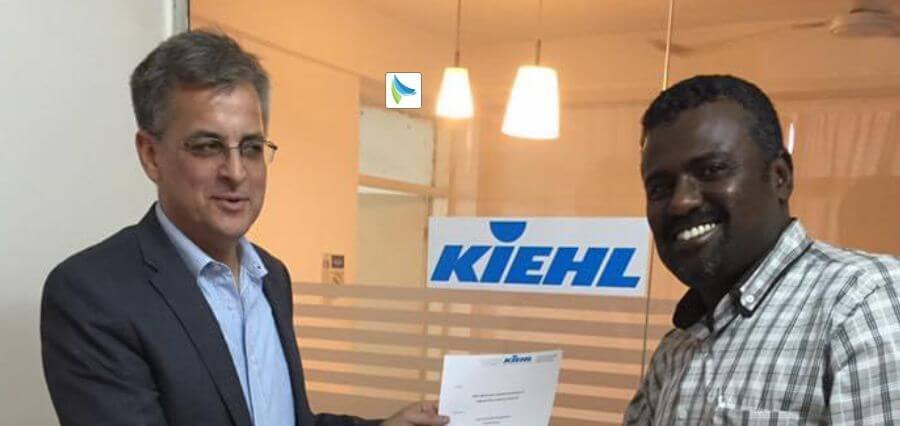Perhaps in the future, we would say we print buildings rather than construct them. Such is the innovation that 3D printing is bringing to the construction industry. The business of construction is a time-consuming and labor-intensive process, but now, with the advent of automation and 3D printing technologies are poised the whole industry is poised to be disrupted.
COBOD International is one of the leaders in the industry that is at the forefront of this change. It is a smaller startup partnering with big-name multinational industrial companies with a mission to build smarter via multifunctional construction robots based on 3D printing technology. Its vision is to automate a minimum of 50% of construction processes on building sites around the world.
The company’s Founder, Henrik Lund-Nielsen, is a technology enthusiast and a career entrepreneur who started and sold his first company at 18 to pay for his MBA. Henrik’s passion for new technologies and business combined led him to eventually launch COBOD.
Under his leadership, COBOD – Constructing Buildings On Demand, 3D printed Europe’s first building in 2017. Subsequently, the first, second, and third-story buildings in Belgium and Germany, the first villa in Dubai, the first wind turbine bases, and the first buildings in Africa have been printed by its 3D construction printers.
Henrik Lund-Nielsen, in an exclusive interview with Insights Success, shares his journey to constructing success with disruptive technology.
Briefly describe your professional journey up until now.
I demonstrated early signs of entrepreneurial drive when I started my first company at the age of 18, which I subsequently sold to pay for my MBA at Alliant International University in San Diego. My professional experience can be told as a tale in two halves, with the first half of my career spent as an employed executive and the second half as the CEO of my businesses.
After years of successfully managing daughter companies of multinational corporations, such as British American Tobacco and VELUX, at the end of my corporate career in 2002, I managed my own group consisting of 14 companies and 1000 employees. It was at this time that I decided to continue my career working on new companies as I did not find big to be better for me. I always had an interest in new technologies and how such may be used to start new enterprises, so it was not a surprise when the first companies I started in the early years were related to the mobile internet, which was new at that time. Later I was involved with new recycling technologies only to arrive at 3D printing.
After doing a lot of studies, I learned that there was a possibility for creating a more intelligent method of construction using 3D printing, solving that the construction business had been labor-intensive and inefficient for years, and that is when COBOD was created.
What challenges did you face along the way?
As our goal was and still is to disrupt the construction industry on a global scale, we need all the help we can get in doing this massive understanding. That’s why we, from the beginning, have been wanting to partner with significant multinational industrial companies that could help us. Obviously, such companies are not easy to get in contact with and make agreements with for a small start-up, but we managed.
So today, COBOD International has such large organizations as General Electric, CEMEX, Holcim, and Peri Group as key minority shareholders. Therefore, it is safe to say that we have successfully overcome this obstacle.
Another problem we confront is that conventional construction techniques continue to be the foundation of local and national building codes. 3D printing wasn’t anticipated when building codes were developed.
What significant impact have you brought to the Automated Machinery industry? What methodologies do you implement that contribute to new growth opportunities?
Automation is a keyword for COBOD. The company is built on the automation of construction processes as this will lead to a solution which is cost-efficient, time saving, and more sustainable compared to conventional building methods. When utilizing COBOD’s 3D printing technology, there are much fewer workers needed on site, delivery of the project can happen quicker, and less waste is generated.
With the help of our technology, our customers are able to print low rise residential buildings, as well as multi-story offices and institutions, warehouses, bridges, storage tanks etc.
Our vision is to go much beyond just 3D printing of concrete. We are focused on a much wider range of functionalities for the printers, so that they can also help with, for instance, painting and insulation of the buildings. It is crucial for us to continue on this path, and in the future, we believe that our technology will contribute to the automation of at least 50% of the construction processes on a typical building site.
Tell us about COBOD and its foundation pillar.
From the beginning, we wanted to develop a modular-based printer system, such that it would be easy to offer the precise size a customer wanted. The modularity of our printers also means that our customers can start with a smaller one and then later add more modules when a larger printer is needed.
We are also based on the idea of sourcing materials for the 3D printed concrete locally, as this will provide the lowest cost of the concrete. In order to create 3D printed concrete from conventional concrete local raw materials, CEMEX and COBOD invented the D.fab solution. Compared to other 3D printing options, this innovation has drastically reduced the cost of 3D printable concrete. With the D.fab solution, only 1% of admixtures, which are obtained from a central site, are necessary to make the material printable, while 99% of the ingredients (cement, sand, and gravel) are locally sourced. Compared to dry-mix mortars, which all other 3D printing businesses use, this solution is 5–10 times more affordable.
How does COBOD promotes workforce flexibility, and what is your role in it?
We are happy to provide the effective and automated solutions that the worldwide construction industry needs. One of the biggest industries in the world, construction, is distinguished by a low degree of automation and the employment of robots. Since the construction industry’s workforce is maturing and it is struggling to find youthful talent, hundreds of millions of workers are forced to perform tedious, boring, exhausting, and frequently dangerous work. This is compared to that with our technology; only three people on location are needed to manage and configure the printer. COBOD’s robotic 3D construction printers are also attractive and interesting for the coming generation of young professionals.
What will be the next significant change in the Automated Machinery industry, and how are you preparing for it?
Our vision is to automate a minimum of 50% of construction processes on building sites. All leading to better, faster, cheaper, and more sustainable construction than conventional construction methods. We also constantly strive to reduce the CO2 footprint of 3D printed concrete. We are diligently developing our printer, from being just a printer to becoming a multifunctional construction robot capable of doing much more than just concrete works.
What are your goals in the upcoming future?
COBOD is in a state of constant development. We always strive to improve our technologies and expand the borders for what our technology can do. Even though 3D concrete printed constructions are cheaper, and 3D printing greatly speeds up project completion and offers much more design flexibility, it is still a new solution, and there could be many more users of it. We are working hard to make sure that the 3D concrete printed buildings are in every country and city. We aim to spread our technology and make it more competitive than conventional construction methods.



















